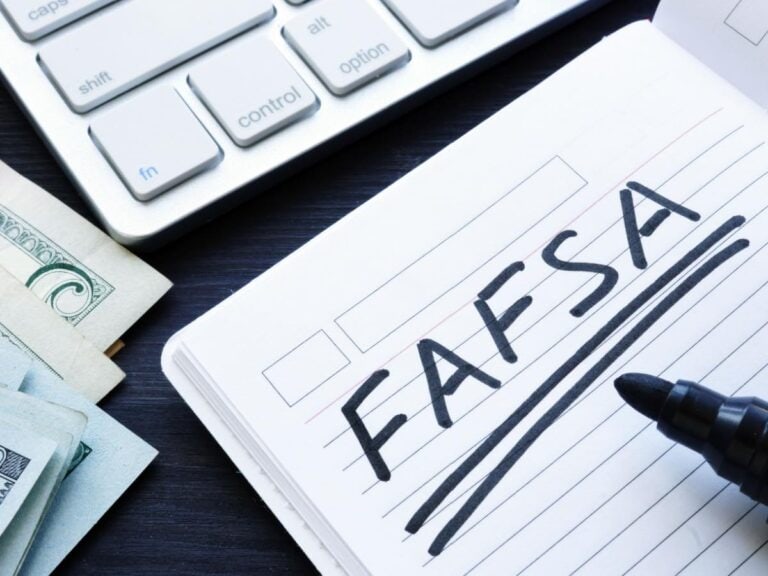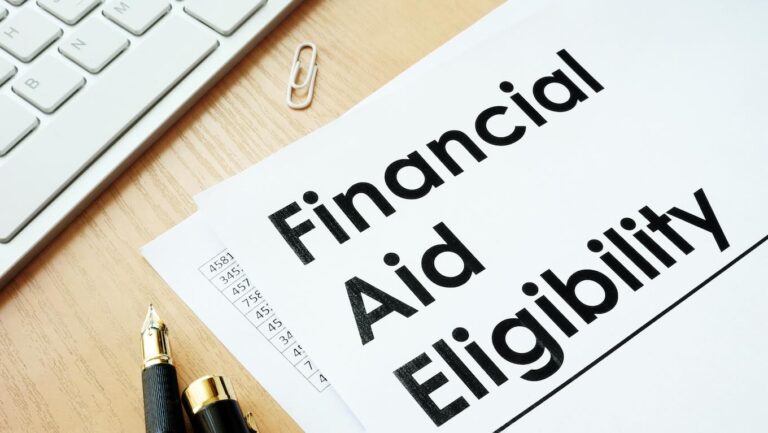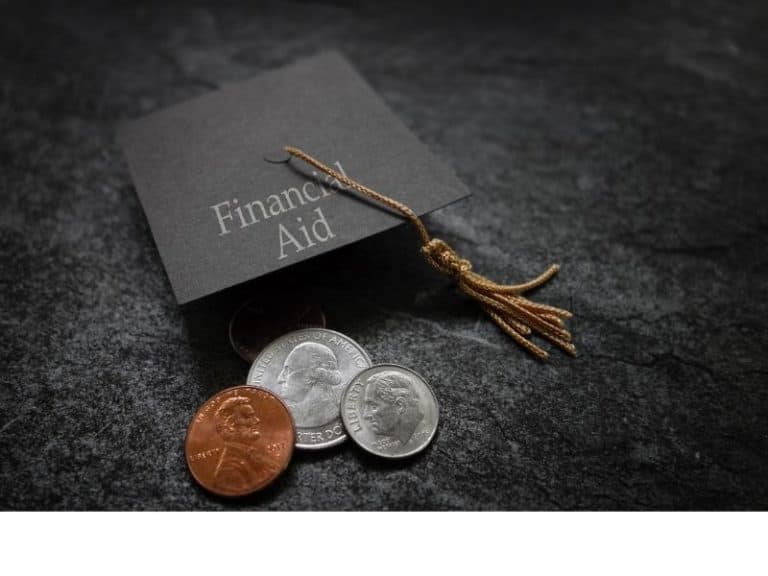Does Applying for Financial Aid Hurt Your Chances of Admissions?
So, you’ve just heard or read that applying for financial aid might hurt your admissions chances.
But every year, almost 18 million students file the FAFSA and more than $2 billion in federal student grants go unclaimed. And now you might be wondering if you should skip filling out the FAFSA form for fear of receiving a rejection letter or being waitlisted or apply for financial aid, which will demonstrate your financial need.
Applying for financial aid will not hurt one’s chances of getting admitted if the school is need-blind, which means that the ability to pay full tuition is not an admissions factor. Meanwhile, one who is not a strong candidate for admission may get rejected or waitlisted if the school is need-aware.
Many schools have a need-blind admissions policy. But then some have a need-aware or need-sensitive admissions policy where an applicant’s income background is taken into consideration during the admissions process.
So, in other words, those with demonstrated need may fail to gain admission.
To admit or not to admit — by the time you get to the end of this article, you will have an idea on whether or not you should indicate on your FAFSA that you wish to be considered for financial aid.
Related Article: How To Pay for College With High Income
Are There Schools That are Both Need-Blind and Need-Aware?
There are some schools that follow a need-blind admissions policy during the initial evaluation of applications, which means financial need is not considered at all. However, during the final read, the financial aid office gets to have a say on which applicants should and should not be accepted.
Just because a college or university has a need-blind admissions policy doesn’t mean right away that it will admit applicants who demonstrate financial need.
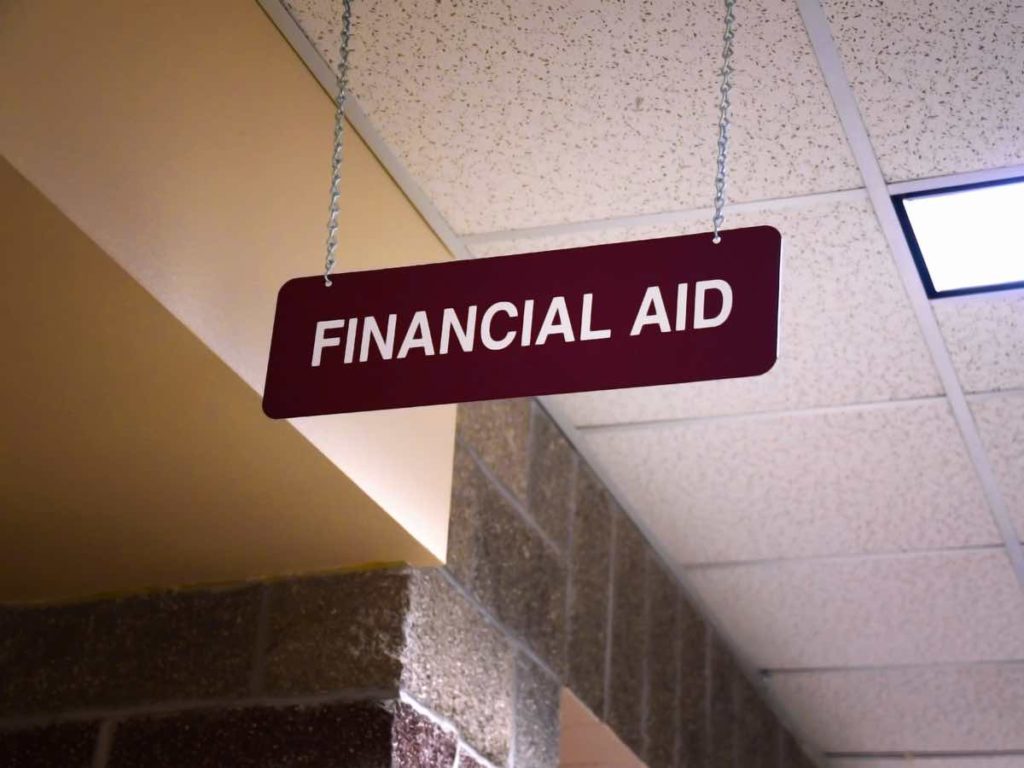
Of course, it’s still important for applicants to meet the various academic admissions factors.
In many instances, they also need to meet a bunch of non-academic factors that each institution’s admissions officers take into account, all of which are listed on the Common Data Set (CDS) — from extracurricular activities, state residence, volunteer work, work experience to demonstrated interest.
Although financial need is not one of them, it’s a factor that comes into play when the school is need-aware or need-blind but, in some instances, has to ultimately shift to a more need-aware admissions policy.
Such is the case with George Washington University.
In 2013, the private federally chartered research university in Washington, DC admitted that the reason why it puts hundreds of applicants on the waitlist each year is that they cannot fully afford the school’s tuition.
So, in other words, applicants who meet the admissions standards of GWU but are not among the top aspirants can go from being admitted to being waitlisted in a flash if they need financial support. The institution adds that this has been affecting around 10% of all applicants it receives each year.
Refrain from thinking that what GWU does is that it accepts all applicants who do not need monetary assistance, and then accepts all the rest, including those with demonstrated financial need, if there are still available slots to fill.
What really happens behind closed doors is this…
As its admissions officers check out applications for the first time, they follow a need-blind admissions policy. This means that they consider those who make for the perfect fit and reject those who do not meet the school’s standards. Afterward, the final decision is left in the hands of the school’s financial aid committee.
Students with impressive applications but who demonstrate financial need are accepted, and those with applications that are not as impressive and require financial assistance, too, are sent to the waitlist.
How many other need-blind colleges and universities are doing the same during the admissions process?
No one really knows.
And this is exactly why it’s not uncommon for aspirants and their respective families to simply say that they don’t require financial assistance when in fact they do — all for the sake of getting an acceptance letter.
Does a Need-Blind Policy Apply to Out-of-State Students?
Most public colleges and universities in the US have a need-blind admissions policy. However, it’s not unlikely for them to meet a smaller percentage of the demonstrated need of out-of-state students than those of in-state students. Besides, in-state applicants tend to have better admissions chances.
There are many reasons why some students prefer to attend out-of-state schools.
Some do it to have access to more academic opportunities, while others do it to enjoy better employment opportunities after graduation.
And then there are also those who choose to attend out-of-state schools to get out of their comfort zone, become independent, have a fresh start, and meet new and different people.
Related Article: Can You Get In-State Tuition After One Year of College?
However, it’s no secret that public institutions in the country tend to ask out-of-state students to pay tuition that’s usually two to three times higher than what they ask from in-state students — it’s all due to the fact that the parents of out-of-state students do not pay state taxes.
It’s a good thing that, as mentioned earlier, most public colleges and universities in the US are need-blind. This means that they will accept qualified out-of-state applicants whether or not they can pay full tuition.
Still, the fact that tuition for in-state students is lower while the acceptance rate for them is generally higher makes it obvious that public schools have a penchant for applicants who are permanent residents of the same state.
It isn’t surprising why they tend to meet a higher percentage of in-state students’ demonstrated need.
As a matter of fact, according to Paying for College Without Going Broke by the Princeton Review, the larger the financial aid required, the harder it can be for poor students to attend out-of-state schools.
The book also adds that it’s possible for a public college or university to take the lead on making a contact with an out-of-state student that it likes based on academic profile and can shoulder the entire bill — institutions for higher education can get a sense of income level based on mailing lists and zip codes via submitted SAT or ACT scores.
It’s no secret that filling out the FAFSA form is the first step to applying for federal financial aid.
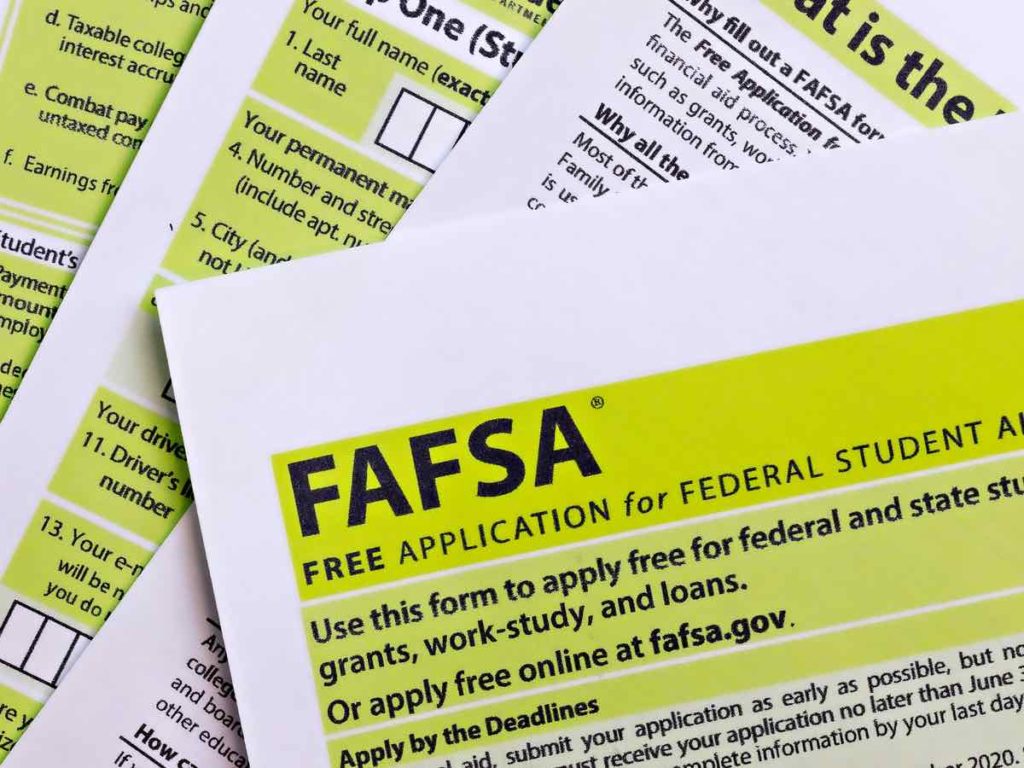
Well, the FAFSA itself may impact the net price for out-of-state students. That’s because when offering financial aid, institutions may consider their position on the list of preferred colleges provided by the students themselves on the FAFSA form. If they are near or at the top, they might offer a smaller package.
The idea is that if students really like a school, they will do anything and everything just to be able to afford college despite the inadequate financial aid offer.
However, the National Association for College Admission Counseling (NACAC) believes that private colleges and universities are more likely to use this particular piece of information on the FAFSA form when deciding which students to admit and which financial aid package to award.
The following are some public schools that are need-blind to in-state students only:
- Appalachian State University
- Arizona State University
- Ball State University
- Binghamton University
- Boise State University
- California State University
- Clemson University
- Colorado School of Mines
- East Carolina University
- Eastern Kentucky University
- Florida Atlantic University
- Florida State University
- George Mason University
- Georgia Institute of Technology
- Georgia State University
- Indiana University
- Iowa State University
- James Madison University
- Kansas State University
- Louisiana State University
- Michigan State University
- Michigan Technological University
- Mississippi State University
- Missouri University of Science and Technology
- Montana State University
- New College of Florida
- North Carolina State University
- Northern Michigan University
- Ohio State University
- Ohio University
- Oklahoma State University
- Old Dominion University
- Oregon Institute of Technology
- Purdue University
- Rutgers University
- San Diego State University
- San Francisco State University
- South Dakota State University
- St. Mary’s College of Maryland
- Stony Brook University
- State University of New York
- Tennessee Technological University
- Texas A&M University
- University of Tennessee
- University of Texas
- University at Buffalo
- University of California
- University of Kentucky
- William and Mary
Does a Need-Blind Policy Apply to Transferees?
There are some colleges and universities that are need-blind to all applicants, both first-time, first-year applicants and transferees. However, there are also schools whose need-blind admissions policy applies to freshmen only. So, in other words, they have a need-aware admissions policy for transferees.
Generally speaking, the acceptance rates for transferees at various institutions are lower than the acceptance rates for fresh high school graduates.
It’s not just this matter that transfer students may face — their financial need may be taken into account, too.
This is true even for institutions for higher education with a need-based admissions policy. Many of them will switch from being need-based to need-aware when evaluating the applications of transferees.
One example is Brown University. According to the Ivy League, it admits qualified first-year applicants on a need-blind basis.
However, the school adds that when evaluating the applications of transferees, it follows a need-aware admissions policy and considers financial need when deciding whether or not to accept them.
Here’s a list of some colleges and universities in the US that have a need-blind admissions policy for incoming freshmen students but have a need-aware admissions policy for transfer students:
- Agnes Scott College
- American University
- Auburn University
- Barnard College
- Bates College
- Bowdoin College
- Brandeis University
- Carleton College
- Clarkson University
- Colgate University
- College of Saint Benedict
- College of the Holy Cross
- Cornell College
- City University of New York
- Duke University
- Elon University
- Emory University
- Florida Institute of Technology
- Fordham University
- George Washington University
- Gonzaga University
- Hampshire College
- Hamilton College
- Illinois Institute of Technology
- Illinois Wesleyan University
- John Carroll University
- Lafayette College
- Lewis & Clark College
- Loyola University
- Marquette University
- Miami University
- Middlebury College
- Mount Holyoke College
- New York Institute of Technology
- Occidental College
- Pepperdine University
- Pitzer College
- Providence College
- Roanoke College
- Rochester Institute of Technology
- Rollins College
- Saint Joseph’s University
- Salisbury University
- Santa Clara University
- Skidmore College
- Smith College
- Spelman College
- Trinity College
- Tulane University
- University of Dallas
- University of Miami
- University of Portland
- University of Richmond
- University of San Diego
- University of the Pacific
- Valparaiso University
- Villanova University
- Wake Forest University
- Wesleyan University
Does a Need-Blind Policy Apply to International Students?
Not all need-blind US institutions apply their need-blind admissions policy to international students. Some need-blind schools will admit qualified international students regardless of their ability to pay, while others will consider the financial need of international students in the admissions process.
First things first: international students are not eligible for federal student aid.
So, in other words, college-level students from abroad who wish to earn a degree in the US are not eligible for federal grants such as the Federal Pell Grant, Federal Supplemental Educational Opportunity Grant (FSEOG), Teacher Education Assistance for College and Higher Education (TEACH), and Iraq and Afghanistan Service Grant.

International students, similarly, are not eligible for federal loans such as Direct Subsidized Loans and Direct Unsubsidized Loans, Direct PLUS Loan and Federal Perkins Loan.
Despite this, in many instances, international students will still be required to fill out the FAFSA form by the US colleges and universities they wish to attend. This is to determine whether or not they are eligible for some type of aid.
Speaking of which, although it’s true that international students are not eligible for federal student aid, they could still receive aid from the state or the institution. And this is where a problem arises: many four-year schools in the country have limited financial aid for international students through their own financial aid offices.
In addition, the vast majority of those that offer institutional aid to international students have their money reserved for graduate students coming from outside the country — it’s rare for undergraduate ones to receive aid.
The acceptance rate for international students is lower than that for US students.
As a matter of fact, according to a report by US News, the average acceptance rate for international students at the 117 national universities the college ranking site ranked is 43.8% only.
The popular college ranker adds that one out of every three US colleges and universities that provided data on the subject matter said they award some type of aid to admitted international students.
But not all of those that do give aid to all international students — only about 40% of international students attending them receive financial aid.
Which Colleges are Need-Blind to International Students?
It’s true that there are US colleges and universities that include international students in their need-blind admissions policy. Unfortunately, only very few of them are in existence. Most of them are the Ivy Leagues and other elite institutions such as Harvard University, Amherst College and MIT.
Fortunately for international students who wish to study and earn a degree in the country, many of the schools that offer financial aid to eligible ones are some of the most popular not only in the US but also across the planet.
What’s more, they are some of the most financially stable institutions because of their endowments.
So, in other words, international students have higher chances of getting accepted into colleges and universities in the country as well as receiving financial aid if they apply to some of the richest schools out there — they can afford to shell out money in order to cover the full or partial demonstrated need of international students.
But international students be warned: since the acceptance rates for international students at competitive schools are so much lower than usual, they will have to have an irresistible application in order to get accepted.
It’s also important for international students to note that some US colleges and universities are need-blind but without full-need financial aid and there are also those that are need-blind with full-need financial aid. Depending on their financial need, choosing the right institution to apply to is a must.
Here are some schools with a need-blind admissions policy minus full-need financial aid for international students:
- Boston College
- Brown University
- Dartmouth College
- Curtis Institute of Music
- Duke University
And now, the following are some of those with a need-blind admissions policy offering full-need financial aid:
- Amherst College
- Harvard University
- Massachusetts Institute of Technology
- Princeton University
- Yale University
The colleges and universities listed above are the only US schools that international students who require aid should consider applying to.
There are various institutions in the land that do not have a need-blind admissions policy alright but offer financial aid, usually in the form of institutional grants and private scholarships, they should consider putting on their college list, too. If they are qualified, chances are that they will get accepted despite applying for financial aid.
Just Before You Apply for Financial Aid
If you are going to apply for financial aid, make sure that you fill your college list with the right schools.
And the ones you should add to it are those with a need-blind admissions policy where all that matters is a winning application — the admissions officers do not consider your ability or inability to pay full tuition.
While there are need-blind institutions, there are also need-aware ones.
Applying to colleges and universities with a need-aware admissions policy is possible if you are someone from a low-income background and could benefit a lot from receiving a hefty financial aid package. However, keep in mind that your chances will not be as high as when applying to a need-blind school.
But there’s a workaround: to need-blind institutions, it doesn’t matter whether or not you have a demonstrated need. They will still accept you if your application is desirable — being in the top 20% to 25% can change the entire game.
Read Also: How Much Debt is Too Much for College?
Disclaimer: The views and opinions expressed in this article are those of the authors and do not necessarily represent those of the College Reality Check.
